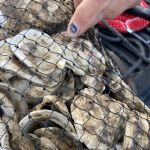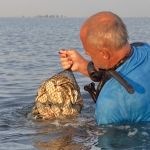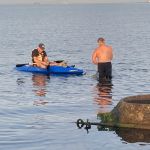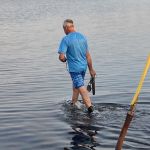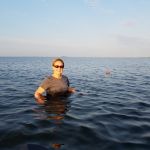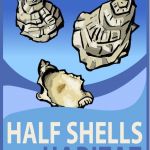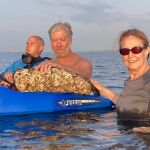Great South Bay Oyster Project
Photo Gallery
Recent Progress
Volunteer
Habitat Restoration

Habitat Restoration
We advocate for healing the creeks that feed our bay, for bay-friendly yards, for helping to return a shellfishing industry to the Great South Bay, and for the deployment of modern wastewater treatment technologies to address the problems caused by 500,000 cesspools and septic tanks, as well as the 197 large scale septic systems in malls, apartment complexes and locally.
Volunteer
Lend a hand! Join our Oyster Project Team and help revive The Great South Bay.
Partnering With Oyster Growers
Of course, nothing happens without cleaner water. That is why getting rid of our cesspools and septic tanks, healing our creeks, tackling runoff, and practicing natural lawn care is so important.
Please contact us with any suggestions you may have. You can also donate our efforts. We want to apply the latest techniques in aquaculture to revitalize our bay, our economy and our local culture.
We advocate for healing the creeks that feed our bay, for bay-friendly yards, for helping to return a shell fishing industry to the Great South Bay, and for the deployment of modern wastewater treatment technologies to address the problems caused by 500,000 cesspools and septic tanks, as well as the 197 large scale septic systems in malls, apartment complexes and locally.
Where You Can Get Fresh, Long Island Blue Point Oysters
- Neguntatogue Oysters (Lindenhurst) – call or text Keith & Nicole at 631-275-8046
- Blue Island Oysters (Sayville)- Call Chris at (631) 563-1330 for availability
- Maris Stella Oysters (Captree) – call or text Sixto at 516-939-5545
- Little A’s (Bay Shore) – call or text Michael at 917-526-1900
- Red Tiger (West Islip) – call or text Lou at 646-228-6273
The Making Of An Oyster Sanctuary
Site Evaluation
Establishing the Sanctuary
Enhancing and Measuring for Success
Recent Progress On Habitat Restoration
Fixing The Bay Park Sewage Treatment Plant
Until we rebuild the plant, and as Kohler says, Do It Right, it will continue to be by far the major source of nitrogenous pollution in The Western Bays. Even when the plant was ‘operational’ 85% of it was coming from Bay Park. Merely getting the plant back to where it was is unacceptable. While there is funding to rebuild the plant itself — and they can’t start soon enough — additional federal funds are needed to modernize the facility and build an outfall pipe that would have treated waste water flow miles out into the ocean. Long Beach would also benefit because it could use the Bay Park Sewage Treatment Plant as well. Nassau County Executive Ed Mangano has called for $500 million from the federal government to modernize the facility.
Paralytic Shellfish Poisoning Throughout LI This May — Bad and Worse To Come?
The conclusions from SCERP (The Stonybrook Southampton Estuarine Research Program) are clear. We are reaping the harvest of having no sewer system in Suffolk, and 100,000+ septic tanks leeching nitrogen into the groundwater for the past 40 years. All indicator are this is going to get much much worse unless we can figure out how to get all that excess nitrogen out of the aquifer, and out of our rivers, ponds and bays, and replace our septic tanks with an eco friendly solution. We need to think big and be ready to act on those plans, or its game over.
The Environmental Defense Fund Weighs In On The Legality of Closing The Old Inlet / Breach
Last month, Jim Tripp of the The Environmental Defense Fund drafted a letter addressed to The Department of Interior, The National Parks Service, The Fire Island National Seashore, The Army Corps of Engineers, and The New York State Department of Environmental Conservation. In it, he argues that The Breach Contingency Plan, adopted in 1996, extended in 2001 for another five years, then on the books but overdue for revision since 2007, must be interpreted in light of previous documents pertaining to the protection of wilderness areas, and that before any action is taken to close The Old Inlet, the following would by law have to happen:
National Parks Service: The Old Inlet Breach at Fire Island
The breach, although not static, is relatively stable and there is a likelihood that closure by natural processes may occur in the future.
Water levels and tidal amplitude in eastern Great South Bay returned to normal soon after Hurricane Sandy and have remained in the normal range.
Water exchange between the ocean and bay has increased in eastern Great South Bay.
Extensive shoaling has occurred within the Great South Bay just north of the breach.
Professor Christopher Gobler of Stonybrook’s School of Marine and Atmospheric Sciences: A Profile
Here’s a nice piece on Prof. Christopher Gobler of Stonybrook’s School of Marine and Atmospheric Sciences (SoMAS). You want to know about toxic algal blooms, what they are doing to the marine plants and animals in our ponds and bays, and what we can do to combat them, he’s the expert. His lectures, which we hope to post here as well soon, are very accessible, yet highly sophisticated.
Reviving New York’s Rivers — With Oysters!
Architect Kate Orff sees the oyster as an agent of urban change. Bundled into beds and sunk into city rivers, oysters slurp up pollution and make legendarily dirty waters clean — thus driving even more innovation in “oyster-tecture.” Orff shares her vision for an urban landscape that links nature and humanity for mutual benefit.
Kate Orff asks us to rethink “landscape”—to use urban greenspaces and blue spaces in fresh ways to mediate between humankind and nature

